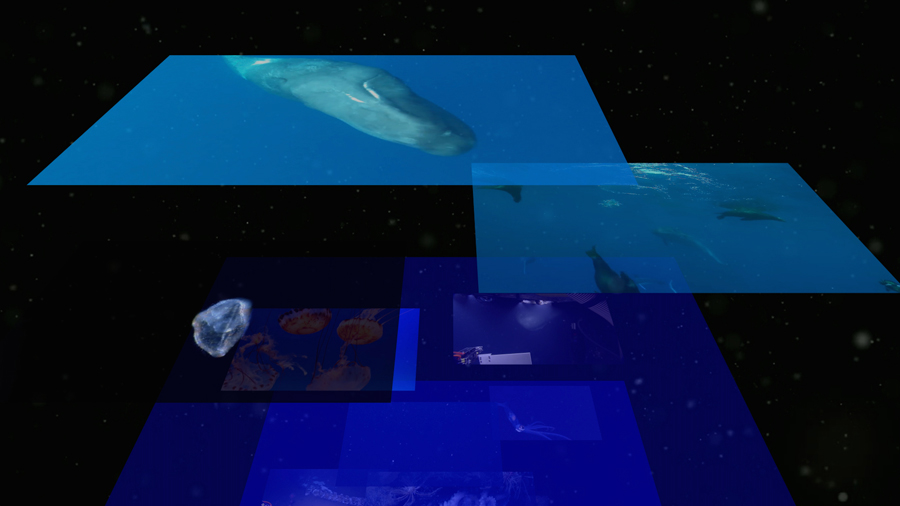‘2018 Triennial: Songs for Sabotage’
Ignoring its faux-dissident title, this year's edition at the New Museum displays a repertoire that is folky, angry, funny, urgent and poignant
Ignoring its faux-dissident title, this year's edition at the New Museum displays a repertoire that is folky, angry, funny, urgent and poignant

When I hear the three words 'New,' 'Museum' and 'Triennial' I get a sinking feeling. I start to worry about getting old. I begin thinking about death, obsolescence and the sad, inevitable thwarting of young artists' dreams. I think about the demented hamster wheel pursuit of The Next Big Thing, and how quickly we forget that before too long The Next Big Thing starts to look like a pair of unfashionable shoes. I blame this feeling on the first iteration, in 2009, of the New Museum's survey of new art from around the world, which was titled 'The Generational Triennial: Younger than Jesus' and, using a rusty guillotine, curated out anyone older than the age of 33.

Even when I've enjoyed the Triennials past – the last edition in 2015, titled 'Surround Audience', featured works and ideas that I still find myself thinking about – I've never quite been able to resist wondering: what, really, are we looking for in these surveys of new art today? A novel use of technology? Something as old fashioned as a new artistic 'movement'? Affirmation that New York can still deliver a new generation of downtown celebrity kids that would make Warhol proud? A juxtaposition of 3-D printed sculpture, dance and explanatory wall labels that will critique capitalism into the rubble and leave us in everlasting peace and happiness? Curators promise us the world. I find myself thinking about death again.

Predictably, the world is promised to us in the fourth New Museum Triennial, which opened this week with the title 'Songs for Sabotage'. But rather than leaving me existential and weary, this year's triennial provoked useful thoughts about perspectives, the limits of knowledge, and assumptions about what contemporaneity looks like, though I suspect this may be contrary to the show's stated intent. Curated by Alex Gartenfeld and Gary Carrion-Murayari, 'Songs for Sabotage' is presented with dizzying stats attesting to the institution's panoptic powers to survey the international scene – 26 artists, artist groups and collectives from 19 countries – and a gloss about how the exhibition 'questions how individuals and collectives around the world might effectively address the connection of images and culture to the forces that structure our society.'

'Songs for Sabotage'. It's title seems a little confused. Sabotage – the deliberate destruction or obstruction of something, or weakening of efficiency, for political, commercial or military advantage – is described in the accompanying pseudo-revolutionary curatorspeak as 'a kind of propaganda, engaging with new and traditional media in order to reveal the built systems that construct our reality, images and truths.' Propaganda and sabotage are not one and the same. And anyway, propaganda on behalf of whom? Who needs persuading? Sabotage to support whose ends? What will get weakened, obstructed or destroyed and who will suffer as a result? Even when we're told that the artists in the show 'offer models for dismantling and replacing the political and economic networks that envelop today's global youth' (hey, what about the rest of us who are older than Jesus?) I could not see anything in this predominantly painting and sculpture-based show that looked like persuasive propaganda or a samizdat saboteur's manual. There were few models for anything world-changing in this show – if we take 'model' to mean a small-scale test run for a bigger project. To my eyes, 'Songs for Sabotage' did something far simpler, working as a collection of personal reflections on identity, from many different regions of the world.

Here is where the exhibition both succeeds and fails. It fails to give us the sabotage, but it gives us a folky, angry, funny, urgent, poignant repertoire of songs. My highlights: Wong Ping's zany, ribald, animated video Wong Ping's Fables 1 (2018), and another psychedelic bad-trip animation, the imaginative Pool Party Pilot Episode (2018) by Hardeep Pandal. Gresham Tapiwa Nyaude's dense and punchy paintings made in reaction to the contemporary political situation in Zimbabwe (indeed, one of them, The New Zimbabwe was completed only this year, responding to the fall of Robert Mugabe), which feature figures that could be from a Nicole Eisenman painting, or the more monstrous canvases of Francis Bacon. Janiva Ellis's trio of paintings that tip tortured-looking cartoonish characters into phantasmagorical explosions of colour and form, which hang around the corner from Dalton Paula's warm brown paintings of sparsely furnished rooms. I don't know enough about global geo-politics in order to fully appreciate the way Manolis D. Lemos's video dusk and dawn look just the same 'riot tourism' (2017) handles the complications of left and right-wing politics in Greece, how the textile tableaux by Zhenya Machneva capture the poignancy of industrial decline in Russia, nor what Anupam Roy's drawings and slogans say about his Marxist-Leninist beliefs in the context of India today. I certainly know nothing about the dangers of deep-sea mining, which the group Inhabitants are keen to warn us about in their display in the museum lobby and online.

Does that make me a bad critic? How much does your average contemporary art museum visitor in the US know of the world? The exhibition reminds me of the idea that an educational qualification measures not how much you do know, but how little you know. ('I hardly recognized any names on the artist list' was the backhanded compliment I kept on hearing from locals at the exhibition opening, as if to suggest that a few familiar artists would make us all feel a lot more comfortable than require us to learn something.)
Lydia Ourahmane's subtle Finitude (2018), lodged in a stairwell between two of the museum's galleries, comprises wall-mounted contact mics emitting a low hum, which is slowly causing the plaster around them to crumble. You could read it as a literal metaphor for sabotage – the artist as the fifth column, bringing the walls of the museum down from inside. But perhaps it has a subtler message: that there are no certainties of knowledge. If something has been built, it can also be destroyed – and hopefully rebuilt in a better way. In these troubled times, that's a song worth remembering.
'2018 Triennial: Songs for Sabotage' runs at the New Museum until 27 May.
Watch Dan Fox’s video-essay on the last edition in 2015, ‘Surround Audience’, here.
And read our reviews of the three previous exhibitions below:
‘3rd New Museum Triennial’ by Laura McLean-Ferris
‘The Ungovernables: 2012 New Museum Triennial’ by Katie Kitamura
‘The Generational: Younger Than Jesus’ by Anne Wehr
Main image: Janiva Ellis, Thrill Issues (detail), 2017, oil on canvas, 2.4 x 2 m. Courtesy: the artist and 47 Canal, New York






















